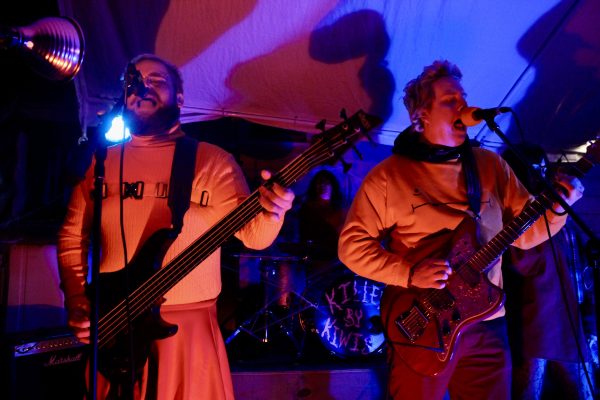Stetson’s “Sorrow” at The Walker Art Center
Górecki’s third symphony comes to Minneapolis.
October 12, 2016
The Walker Art Center’s McGuire Theatre held a dissonant and melodic tone as avant-garde saxophonist, Colin Stetson, reimagined Górecki’s third symphony. The show’s beginning was a spotlight-shining, jaw-dropping demonstration of Stetson’s musical stamina and imagination—transforming his baritone saxophone from a reed instrument to a stomach growling foghorn—he captured the attention of the audience and held them throughout the night.
“Sorrow” was Stetson’s recreation of Polish Composer Henryk Górecki’s Symphony No. 3, Op. 36, a three movement symphony written in 1976 that received critical praise for its experimental approach to medieval-style classical composition.
An audience member said that this was his third time seeing Stetson and that his performances are centered around “saxophone tone manipulation and long, uninterrupted cadences of cyclical breathing.”
The pieces were arranged and directed by Stetson and were performed alongside 11 other instruments—saxophones, cellos, violins, electric guitars, drums, keyboards and a solo soprano. The movement began with Stetson’s drowning bari sax and slowly grew through the addition of beautiful orchestral melodies and electronic undertones.
Each musician was in sync with one another, not only their musical precision but also their physical bodies. They closed their eyes at the same moments, simultaneously swayed like human metronomes, and catered their body language to the symphony’s dynamics and tone.
The music took the piece in and out of relief and intensity. Combining a romantic-sounding duo of cello and violin with booming drums, echoing guitars, and a melodious operatic singer, the symphony had both a classical and modern feel to it.
The solo soprano sang in Polish, but the meaning of the music was not lost as her face personified the music. Górecki’s third symphony tells the story of a mother who has lost her child and a child living in separation from their mother, her face first reflected despair and terror, but by the end, hope and acceptance.
The silence of the audience and the performers between the movements kept the intensity of the show even when the music stopped. The audience consisted of Walker Art members, classical music listeners, experimental music enthusiasts and everyone in between.
This symphonic and electric movement was fluid and continuous for an hour and a half with no sound except for music.
The show ended abruptly as Stetson put down his foghorn saxophone and said, “Thank you very much for coming, I hear there’s a party afterwards, I’ll see you there.”




